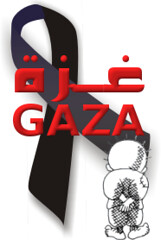Sunday, February 13, 2005
The Murky Edges of Mootwah
The new joint doctrine retires the spectrum of conflict and recognizes combat operations other than war.
There is a long tradition of employing the armed forces for noncombat missions. The classic example is the Berlin Airlift of 1948-49. It was a humanitarian operation to bring food and fuel to the beleaguered city, but it was also of strategic importance because it broke the Soviet blockade and settled an early crisis of the Cold War.
It's a big jump, however, from the Berlin Airlift to the currently fashionable "Military Operations Other Than War." The present construction of MOOTW includes humanitarian actions, but they are not the crux of it. The emphasis is on borderline missions that may involve the use of lethal force and exposure to lethal danger during periods otherwise regarded as peacetime.
Army Gen. John M. Shalikashvili, Chairman of the Joint Chiefs of Staff, says that "while we have historically focused on warfighting, our military profession is increasingly changing its focus to a complex array of military operations other than war." The Commission on Roles and Missions last year predicted that these operations will be the area of significant growth in employment of US military forces in the years ahead.
Joint doctrine recognizes three kinds of peace operations: peacekeeping (which has the consent of the belligerents), peace enforcement ("coercive use of military force" necessary to compel compliance), and peacemaking (involves mediation and negotiation). The terms are derived from the works of UN Secretary General Boutros Boutros-Ghali.
The concept is an easy fit with the Clinton Administration, which showed an early fascination for "soft power" and "assertive multilateralism" and which is still inclined toward using military forces for limited objectives in various kinds of contingencies. A recent joint doctrine manual states in bold type that "political objectives drive MOOTW at every level from strategic to tactical."
The plan of those who framed MOOTW was that it would never be pronounced as an acronym. That injunction was doomed to failure. The popular way to say it is "Mootwah."
MOOTW grew out of the low-intensity conflict theories of the 1980s. As recounted in Joint Force Quarterly by Lt. Col. Ann E. Story of the Air Force Doctrine Center, the Joint Staff decided that the "low-intensity conflict" term was "potentially offensive to host nations" where such conflict might occur. Furthermore, "low-intensity conflict" was not in the vocabulary of other agencies, notably the State Department. That gave rise to "operations short of war," which evolved into "operations other than war" and finally into Mootwah.
As late as 1992, US doctrine recognized a spectrum of conflict that ran from counterinsurgency to general war. The spectrum was seen as continuous, reflecting an understanding that armed conflict is prone to escalate, spread, or intensify. If we cross the starting line, we should be prepared to stay the course.
In 1993, however, Joint Pub 3-0, Doctrine for Joint Operations, retired the spectrum of conflict in favor of the "range of military operations." In 1995, Joint Pub 3-07 divided this range of military operations into war and Mootwah, drawing a hard line between them, with a further subdivision into noncombat MOOTW and-get this-combat MOOTW. "Strikes and raids" are categorized as "Operations Other Than War," but they may be regarded as either combat or noncombat operations.
The effect of the doctrine is to establish separation between war and MOOTW and to concurrently characterize an appreciable number of combat operations as something different from war. There are numerous reasons for caution here.
*Threshold of combat. The doctrine makes casual use of military force more likely. It weakens the principle that we should enter armed conflict only after grave consideration and in aid of important national interests.
*Loose rules of engagement. Joint Pub 3-0 warns that MOOTW rules of engagement will be "more restrictive, detailed, and sensitive to political concerns than in war" and "may change frequently during operations."
*Demilitarization of military operations. Joint Pub 3-0 says MOOTW is not proprietary to the Department of Defense. Other US government agencies as well as nongovernmental organizations and international organizations are involved, too. As more military operations are brought under the MOOTW umbrella, they move further from military control.
*Command and control. These operations tend to be international, and some ambiguity remains in the provision that while US officers keep "combatant command" of US forces, a non-US peacekeeping force commander may exert "operational control."
*Mission creep. There is often pressure for limited operations to expand in directions not originally intended. The London Financial Times calls the military implementation force in Bosnia-Hercegovina an "accomplice" of the resurgent factions because the IFOR commander avoids crossing the "Mogadishu line" that separates peacekeeping from law enforcement. (In Mogadishu in 1993, humanitarian assistance turned into a bloody firefight.)
It is virtually certain that the involvement of the armed forces in Operations Other Than War will continue and grow. No one else has the discipline, the organization, and the efficiency to do the job. The outlook is rendered more precarious, however, by joint doctrine that conceives of strikes and raids as noncombat operations. It would be a good idea to revive the spectrum of conflict as an element of doctrine and recognize again that there is nothing routine about the employment of lethal military force at any level.
Copyright Air Force Association. All rights reserved.







